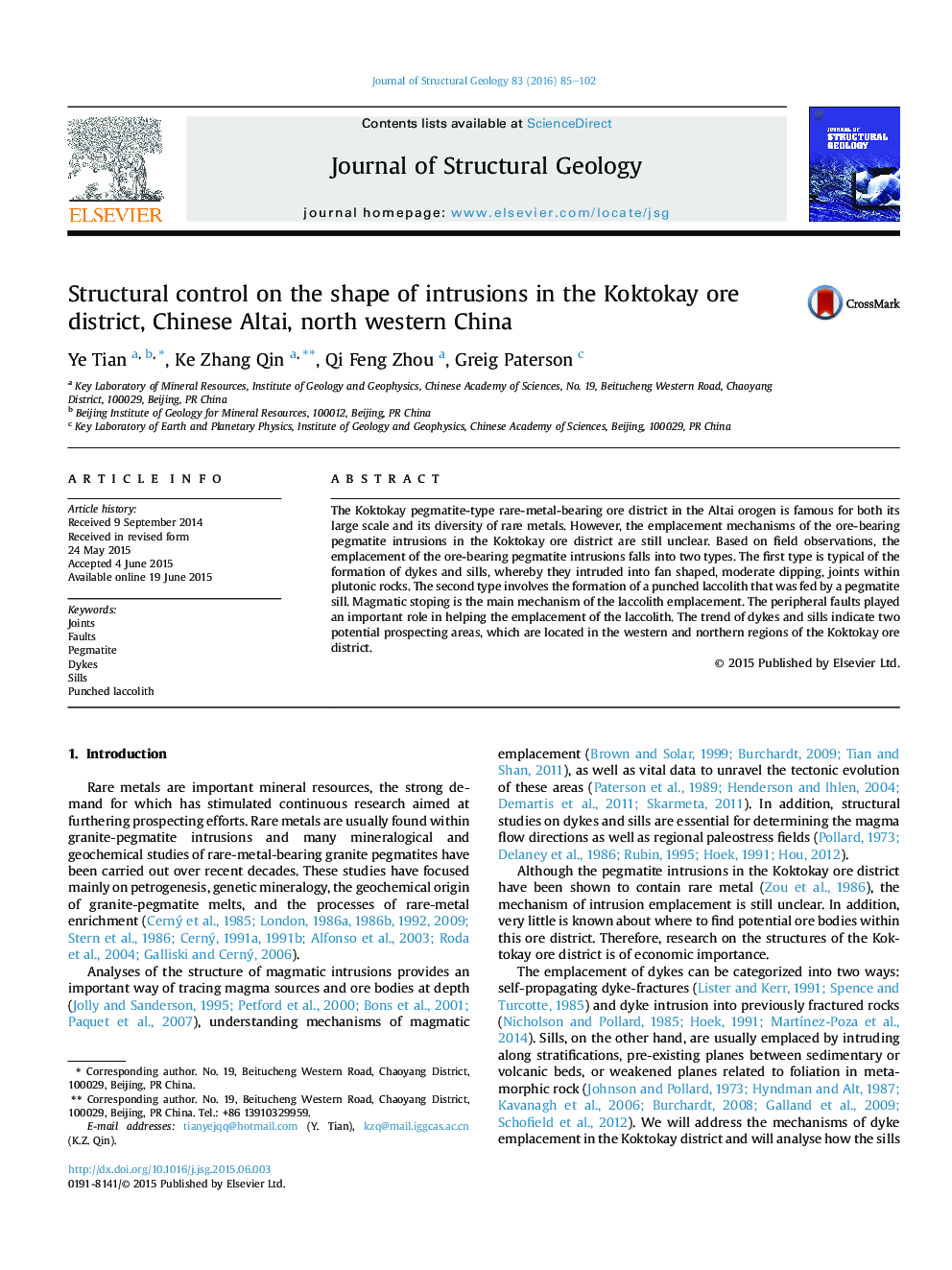| کد مقاله | کد نشریه | سال انتشار | مقاله انگلیسی | نسخه تمام متن |
|---|---|---|---|---|
| 4732972 | 1640497 | 2016 | 18 صفحه PDF | دانلود رایگان |
• Foliations and then joints are generated during the folding process.
• Pegmatite dykes and sills were formed by intruding into the joints and foliations.
• A punched laccolith in the Koktokay ore district, which was laterally fed, was identified.
• Two potential prospecting areas in the Koktokay ore district are identified.
The Koktokay pegmatite-type rare-metal-bearing ore district in the Altai orogen is famous for both its large scale and its diversity of rare metals. However, the emplacement mechanisms of the ore-bearing pegmatite intrusions in the Koktokay ore district are still unclear. Based on field observations, the emplacement of the ore-bearing pegmatite intrusions falls into two types. The first type is typical of the formation of dykes and sills, whereby they intruded into fan shaped, moderate dipping, joints within plutonic rocks. The second type involves the formation of a punched laccolith that was fed by a pegmatite sill. Magmatic stoping is the main mechanism of the laccolith emplacement. The peripheral faults played an important role in helping the emplacement of the laccolith. The trend of dykes and sills indicate two potential prospecting areas, which are located in the western and northern regions of the Koktokay ore district.
Figure optionsDownload high-quality image (401 K)Download as PowerPoint slide
Journal: Journal of Structural Geology - Volume 83, February 2016, Pages 85–102
